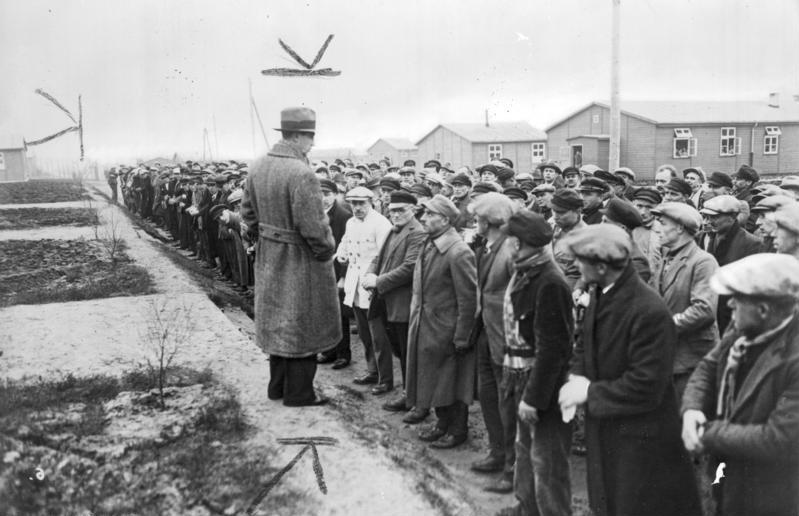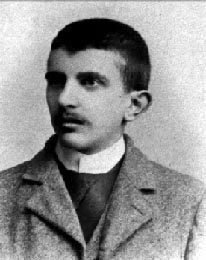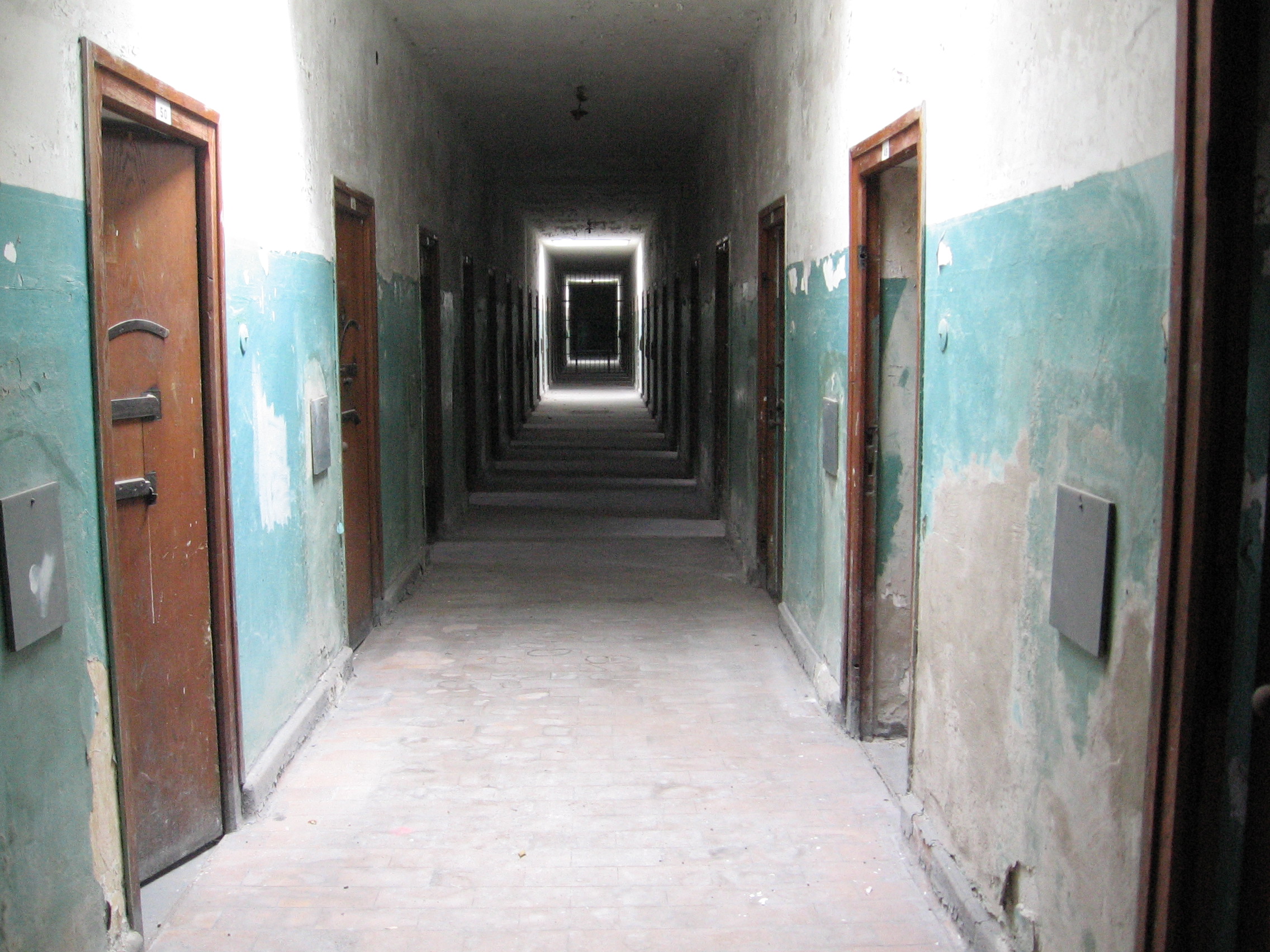|
Sonnenburg Concentration Camp
Sonnenburg concentration camp (german: Konzentrationslager Sonnenburg) was opened on 3 April 1933 in Sonnenburg (now Słońsk in Poland) near Küstrin (Kostrzyn nad Odrą) in a former Neumark prison, on the initiative of the Free State of Prussia Ministry of the Interior and Justice. History Although the state of hygiene in the building, which had been closed in 1930 was appalling, officials of the Prussian justice ministry recommended it as a suitable site. They estimated the capacity of the building at 941 so-called protective custody prisoners (''Schutzhäftlinge''), who could be accommodated either in single cells or in communal cells holding up to 20, 30 and 60 people each. The first 200 prisoners along with 60 SA auxiliary police came on 3 April 1933 from the Berlin Police Presidium. Later, on the order of the head of the Prussian Gestapo, prisoners were deported from the penal institution of Gollnow in Pomerania to Sonnenburg, bringing the number of inmates to 1,000. ... [...More Info...] [...Related Items...] OR: [Wikipedia] [Google] [Baidu] |
Bundesarchiv Bild 183-E0406-0022-035, Zuchthaus Sonnenburg, Ermordete Gefangene
The German Federal Archives or Bundesarchiv (BArch) (german: Bundesarchiv) are the National Archives of Germany. They were established at the current location in Koblenz in 1952. They are subordinated to the Federal Commissioner for Culture and the Media (Claudia Roth since 2021) under the German Chancellery, and before 1998, to the Federal Ministry of the Interior (Germany), Federal Ministry of the Interior. On 6 December 2008, the Archives donated 100,000 photos to the public, by making them accessible via Wikimedia Commons. History The federal archive for institutions and authorities in Germany, the first precursor to the present-day Federal Archives, was established in Potsdam, Brandenburg in 1919, a later date than in other European countries. This national archive documented German government dating from the founding of the North German Confederation in 1867. It also included material from the older German Confederation and the Imperial Chamber Court. The oldest documents i ... [...More Info...] [...Related Items...] OR: [Wikipedia] [Google] [Baidu] |
Schutzstaffel
The ''Schutzstaffel'' (SS; also stylized as ''ᛋᛋ'' with Armanen runes; ; "Protection Squadron") was a major paramilitary organization under Adolf Hitler and the Nazi Party in Nazi Germany, and later throughout German-occupied Europe during World War II. It began with a small guard unit known as the ''Saal-Schutz'' ("Hall Security") made up of party volunteers to provide security for party meetings in Munich. In 1925, Heinrich Himmler joined the unit, which had by then been reformed and given its final name. Under his direction (1929–1945) it grew from a small paramilitary formation during the Weimar Republic to one of the most powerful organizations in Nazi Germany. From the time of the Nazi Party's rise to power until the regime's collapse in 1945, the SS was the foremost agency of security, surveillance, and terror within Germany and German-occupied Europe. The two main constituent groups were the '' Allgemeine SS'' (General SS) and ''Waffen-SS'' (Armed SS). The ' ... [...More Info...] [...Related Items...] OR: [Wikipedia] [Google] [Baidu] |
Esterwegen Concentration Camp
The Esterwegen concentration camp near Esterwegen was an early Nazi concentration camp within a series of camps first established in the Emsland district of Germany. It was established in the summer of 1933 as a concentration camp for 2000 so-called political ''Schutzhäftlinge'' (protective custody prisoners) and was for a time the second largest concentration camp after Dachau. The camp was closed in summer of 1936. Thereafter, until 1945 it was used as a prison camp. Political prisoners and so-called ''Nacht und Nebel'' prisoners were also held there. After the war ended, Esterwegen served as a British internment camp, as a prison, and, until 2000, as a depot for the German Army. The most famous prisoner was writer and editor of the weekly magazine, ''Die Weltbühne'', Carl von Ossietzky, who won the Nobel Peace Prize in 1935. Comedian Werner Finck was detained in Esterwegen for six weeks. SS-''Hauptscharführer'' Gustav Sorge, nicknamed "The Iron Gustav" for his brutality ... [...More Info...] [...Related Items...] OR: [Wikipedia] [Google] [Baidu] |
Ruhr University Bochum
The Ruhr University Bochum (, ) is a public research university located in the southern hills of the central Ruhr area, Bochum, Germany. It was founded in 1962 as the first new public university in Germany after World War II. Instruction began in 1965. The Ruhr-University Bochum is one of the largest universities in Germany and part of the Deutsche Forschungsgemeinschaft, the most important German research funding organization. The RUB was very successful in the Excellence Initiative of the German Federal and State Governments (2007), a competition between Germany's most prestigious universities. It was one of the few institutions left competing for the title of an "elite university", but did not succeed in the last round of the competition. There are currently nine universities in Germany that hold this title. The University of Bochum was one of the first universities in Germany to introduce international bachelor's and master's degrees, which replaced the traditional German Di ... [...More Info...] [...Related Items...] OR: [Wikipedia] [Google] [Baidu] |
Wrocław
Wrocław (; german: Breslau, or . ; Silesian German: ''Brassel'') is a city in southwestern Poland and the largest city in the historical region of Silesia. It lies on the banks of the River Oder in the Silesian Lowlands of Central Europe, roughly from the Baltic Sea to the north and from the Sudeten Mountains to the south. , the official population of Wrocław is 672,929, with a total of 1.25 million residing in the metropolitan area, making it the third largest city in Poland. Wrocław is the historical capital of Silesia and Lower Silesia. Today, it is the capital of the Lower Silesian Voivodeship. The history of the city dates back over a thousand years; at various times, it has been part of the Kingdom of Poland, the Kingdom of Bohemia, the Kingdom of Hungary, the Habsburg monarchy of Austria, the Kingdom of Prussia and Germany. Wrocław became part of Poland again in 1945 as part of the Recovered Territories, the result of extensive border changes and expulsions ... [...More Info...] [...Related Items...] OR: [Wikipedia] [Google] [Baidu] |
Breslau-Dürrgoy Concentration Camp
Breslau-Dürrgoy concentration camp or ''KZ Dürrgoy'' was a short-lived Nazi German concentration camp set up in the southern part of Wrocław (german: Breslau), then in Germany, before World War II on the grounds of the old fertilizer factory "Silesia". It was located in what, since 1945, has become known as the Tarnogaj neighbourhood of Wrocław (german: Dürrgoy), at the Strehlener Chaussee or Strzeliński Street (today ul. Bardzka), opposite the cemetery of the Holy Ghost. The camp, intended for the opponents of Nazism, was established at a place of the former POW camp for French prisoners of World War I, converted and utilized by the fertilizer factory. The new camp was founded on the initiative of the commander of SA in Silesia, '' SA-Obergruppenführer'' Edmund Heines, on 12 March 1933,Encyklopedia Wrocławia, Wrocław 2000, , p. 566. and liquidated on 10 August 1933 with all prisoners transported to a larger concentration camp at Osnabrück. History Initially, around 200 p ... [...More Info...] [...Related Items...] OR: [Wikipedia] [Google] [Baidu] |
Breitenau Concentration Camp
Breitenau concentration camp was one of the first concentration camps established by the Nazis. It was founded in June 1933 as an addition to the Breitenau Labor and Welfare House, less than six months after the Nazis by a democratic election in Germany became the majority party in the German parliament. It closed in March 1934 and reopened in 1940 where it remained in operation until the end of World War II. In 1984, a memorial was constructed on the site of the former camp. History In 1133, Benedictines founded a monastery at Breitenau. Philip I, Landgrave of Hesse converted the monastery to an estate in 1527. By 1579, it became a horse stable and warehouse for agricultural products. Between the early 17th and late 19th centuries, it mostly served as a country residence. It was converted into a prison labor camp for beggars, vagabonds, and so-called "lewd women" in 1874. Three years later, an institution for the rural poor was established alongside the prison camp. Treatment at ... [...More Info...] [...Related Items...] OR: [Wikipedia] [Google] [Baidu] |
Eugène Greau
Eugène Greau (29 May 1904 – 20 December 1943) was a French racing cyclist. He rode in the 1927 Tour de France. He died in the Sonnenburg concentration camp Sonnenburg concentration camp (german: Konzentrationslager Sonnenburg) was opened on 3 April 1933 in Sonnenburg (now Słońsk in Poland) near Küstrin (Kostrzyn nad Odrą) in a former Neumark prison, on the initiative of the Free State of Prussia M .... References External links * 1904 births 1943 deaths French male cyclists Sportspeople from Vendée People who died in Sonnenburg concentration camp French civilians killed in World War II Cyclists from Pays de la Loire {{France-cycling-bio-1900s-stub ... [...More Info...] [...Related Items...] OR: [Wikipedia] [Google] [Baidu] |
René Lefebvre
René Charles Joseph Marie Lefebvre (23 February 1879 – 4 March 1944) was a French factory-owner from Tourcoing,The ghost at all our tables , Stephen McInerney on ''Marcel Lefebvre: The biography'', Oriens, Summer 2005 who died in the German concentration camp in Sonnenburg, in the (today in Lubusz Province in western ), where he had been imprison ... [...More Info...] [...Related Items...] OR: [Wikipedia] [Google] [Baidu] |
Carl Von Ossietzky
Carl von Ossietzky (; 3 October 1889 – 4 May 1938) was a German journalist and pacifist. He was the recipient of the 1935 Nobel Peace Prize for his work in exposing the clandestine German re-armament. As editor-in-chief of the magazine ''Die Weltbühne'', Ossietzky published a series of exposés in the late 1920s, detailing Germany's violation of the Treaty of Versailles by rebuilding an air force (the predecessor of the Luftwaffe) and training pilots in the Soviet Union. He was convicted of treason and espionage in 1931 and sentenced to eighteen months in prison but was granted amnesty in December 1932. Ossietzky continued to be a vocal critic against German militarism after the Nazis' rise to power. Following the 1933 Reichstag fire, Ossietzky was again arrested and sent to the Esterwegen concentration camp near Oldenburg. In 1936, he was awarded the 1935 Nobel Peace Prize but was forbidden from travelling to Norway and accepting the prize. After enduring years of mistre ... [...More Info...] [...Related Items...] OR: [Wikipedia] [Google] [Baidu] |
Erich Mühsam
Erich Mühsam (6 April 1878 – 10 July 1934) was a German-Jewish antimilitarist anarchist essayist, poet and playwright. He emerged at the end of World War I as one of the leading agitators for a federated Bavarian Soviet Republic, for which he served 5 years in prison. Also a cabaret performer, he achieved international prominence during the years of the Weimar Republic for works which, before Adolf Hitler came to power in 1933, condemned Nazism and satirized the future dictator. Mühsam was tortured and murdered in the Oranienburg concentration camp in 1934. Biography Early life: 1878–1900 The third child born to Siegfried Seligmann Mühsam, a middle-class Jewish pharmacist, Erich Mühsam was born in Berlin on 6 April 1878. Soon after, the family moved to the city of Lübeck. Mühsam was educated at the Katharineum- Gymnasium in Lübeck, a school known for its authoritarian discipline and corporal punishment, which served as the model for several of the settings in ... [...More Info...] [...Related Items...] OR: [Wikipedia] [Google] [Baidu] |
Hans Litten
Hans Achim Litten (19 June 1903 – 5 February 1938) was a German lawyer who represented opponents of the Nazis at important political trials between 1929 and 1932, defending the rights of workers during the Weimar Republic. During one trial in 1931, Litten subpoenaed Adolf Hitler to appear as a witness, and cross-examined him for three hours. Hitler was so rattled by the experience that, years later, he would not allow Litten's name to be mentioned in his presence. In retaliation, Litten was arrested on the night of the Reichstag fire along with other progressive lawyers and leftists. Litten spent the rest of his life in one German concentration camp or another, enduring torture and many interrogations. After five years and a move to Dachau, where his treatment worsened and he was cut off from all outside communication, he committed suicide. A number of memorials to him exist in Germany, but Litten was largely ignored for decades because his politics did not fit comfortab ... [...More Info...] [...Related Items...] OR: [Wikipedia] [Google] [Baidu] |






